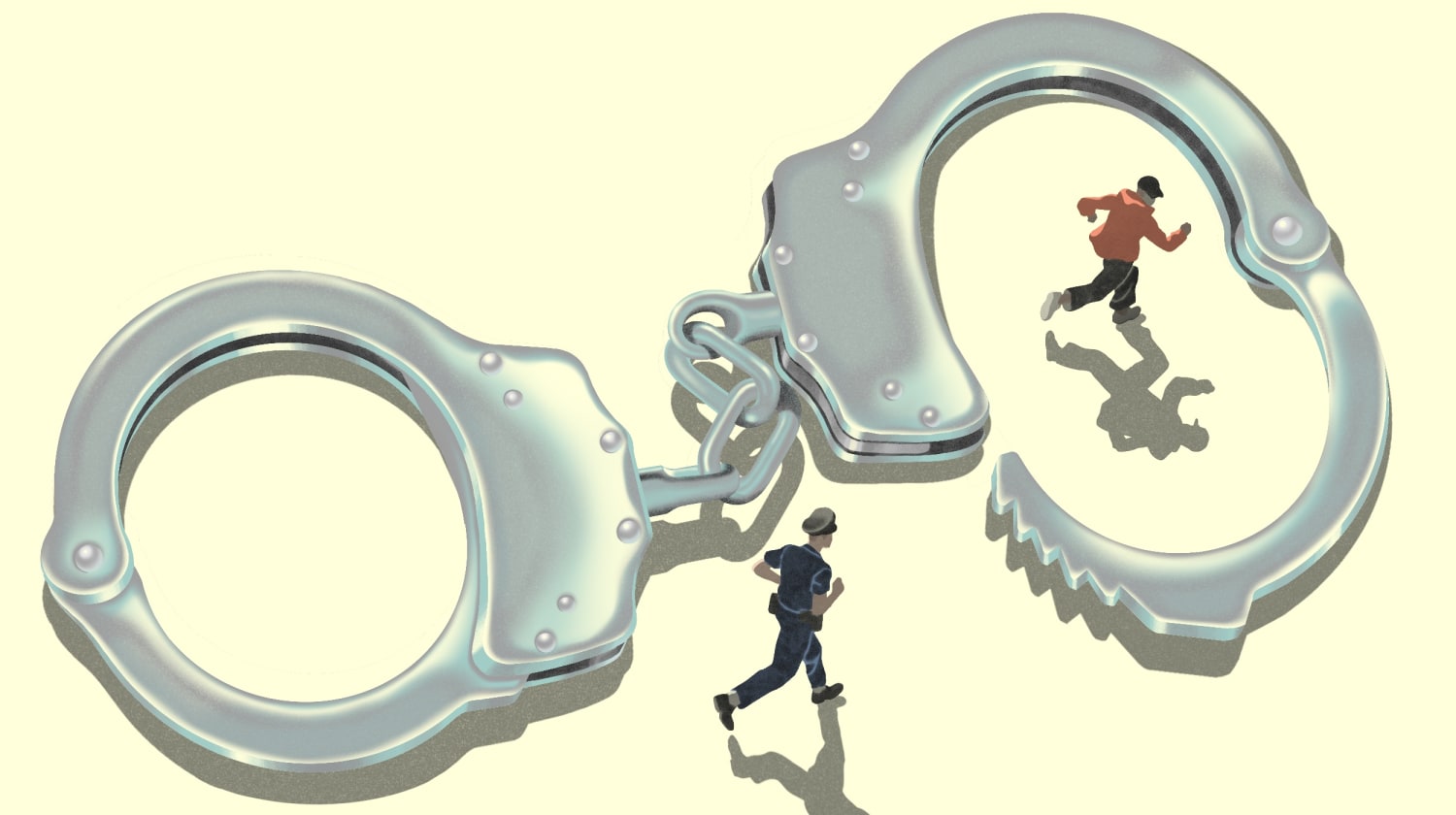

Foot chases have long been a routine and accepted part of what police officers do: When someone runs from an officer, the officer takes off after them.
These chases can end catastrophically, with confrontations in which suspects are more likely than police officers to be injured or killed, research finds. In Memphis last month, police officers chased Tyre Nichols on foot following a traffic stop, then beat him to death when they caught him. Five officers were charged with second-degree murder.
Yet the Memphis Police Department does not have a policy specifying how officers should handle foot chases, and neither do most American law enforcement agencies.
But that’s begun to change, after a string of high-profile police killings that followed foot chases in other cities — including Chicago; Sacramento, California; Baltimore; and Las Vegas — fed an expanding effort to limit such pursuits. Footage from officers’ body cameras has given the public a firsthand look at how chases can turn deadly. Studies in different parts of the country have found that a significant proportion — ranging from 12% to 48% — of police shootings followed foot pursuits.
“Everyone knows this is a problem,” said Chris Burbank, the former police chief in Salt Lake City, and now a vice president at the Center for Policing Equity, which helps police departments find ways to reduce the use of force.
More than a decade ago, the Las Vegas Metropolitan Police Department became one of the first in the country to create a policy on foot chases after coming under heavy criticism for a high number of deadly shootings. Hoping to avoid a federal investigation, the agency sought help from police reform experts at the Center for Policing Equity and the Justice Department’s Office of Community Oriented Policing Services. The experts found that a disproportionate number of use-of-force incidents occurred following foot pursuits, Burbank said.
The department’s new foot chase policy required officers to consider the risk to themselves and the person they’re pursuing, and to seek alternatives, such as calling for backup to surround the person. The policy also requires a supervisor to review what happened. The new policy was among several changes credited with helping the department reduce its use of force.
Burbank reviewed the Memphis Police Department’s policies and procedures for NBC News. He said the document includes some worthy guidelines about when police officers may use deadly force — including a prohibition against killing someone who is fleeing arrest for a nonviolent crime. The Memphis Police Department also has a policy restricting car chases; such policies became common nationwide in response to deadly crashes in the 1980s and 1990s.
But there is nothing in the Memphis policy document that guides officers on when it is OK to chase someone on foot and how to avoid using unnecessary force if they catch the person, Burbank said. “I think it is absolutely lacking in this particular circumstance,” Burbank said.
Officer Christopher Williams, a spokesman for the Memphis Police Department, acknowledged in an email that there was “no direct policy regarding foot pursuits.” Asked if there was any other kind of policy or training that addresses foot pursuits, Williams said officers were trained “in a wide variety of topics,” including communications during a foot pursuit.
The Memphis police union did not respond to requests for comment. A former union head, Mike Williams, who left the force in 2020, said that while the department grants wide latitude for chasing people on foot, it restricts when officers can use deadly force. The department likely hasn’t adopted a foot pursuit policy because, before Nichols’ death, it didn’t have a reason to, he said.
“I don’t know that foot pursuits have been an issue in the city of Memphis,” Williams said.
But some activists said that they’d heard for years from people who said officers used excessive force on them after a foot chase. “It’s been a problem,” activist Casio Montez said. “Only after Tyre is it getting national attention.”
Over the past several weeks, activists have pressed the Memphis Police Department to bring in an independent investigator, and the City Council is considering measures that would impose regular audits of police training methods.
Foot pursuits haven’t been a main focus of advocates who have demanded changes since Nichols’ death. But when asked about the idea of a foot pursuit policy, they said they would like to see one.
“Something needs to be codified in Memphis Police Department policies and procedures,” said Van Turner Jr., the president of the NAACP’s Memphis chapter. “You’d think something like that would already be there. But we need to have something in there going forward.”
Sometimes foot pursuits are essential to police work, law enforcement officials say, particularly in situations in which someone poses a danger to the public or has just committed a violent crime. The policies cities have adopted don’t ban chases but aim to ensure they don’t lead to the use of excessive force.
Police in Sacramento adopted a foot pursuit policy in 2018, following the fatal shooting of Stephon Clark, 22, during a foot chase. The policy requires officers to weigh their own safety, as well as that of the person under pursuit and the rest of the community, in deciding whether a chase is worth it.
Daniel Hahn, who was police chief at the time, said in an interview last week that the idea of a foot pursuit policy had been new to him. Until then, it was considered common practice for an officer to chase anyone who ran from them, he said. Not doing so would have seemed as if they were just letting criminals go.
“It was the community’s questioning of officers chasing someone into a backyard that actually got me to think about it,” Hahn said.
Hahn, who is now retired, said a foot pursuit policy alone is just one element of reducing the use of force. But he believes the new foot chase policy likely saved lives, including those of the officers.
“It protects everybody,” Hahn said.

 Latest Breaking News Online News Portal
Latest Breaking News Online News Portal




